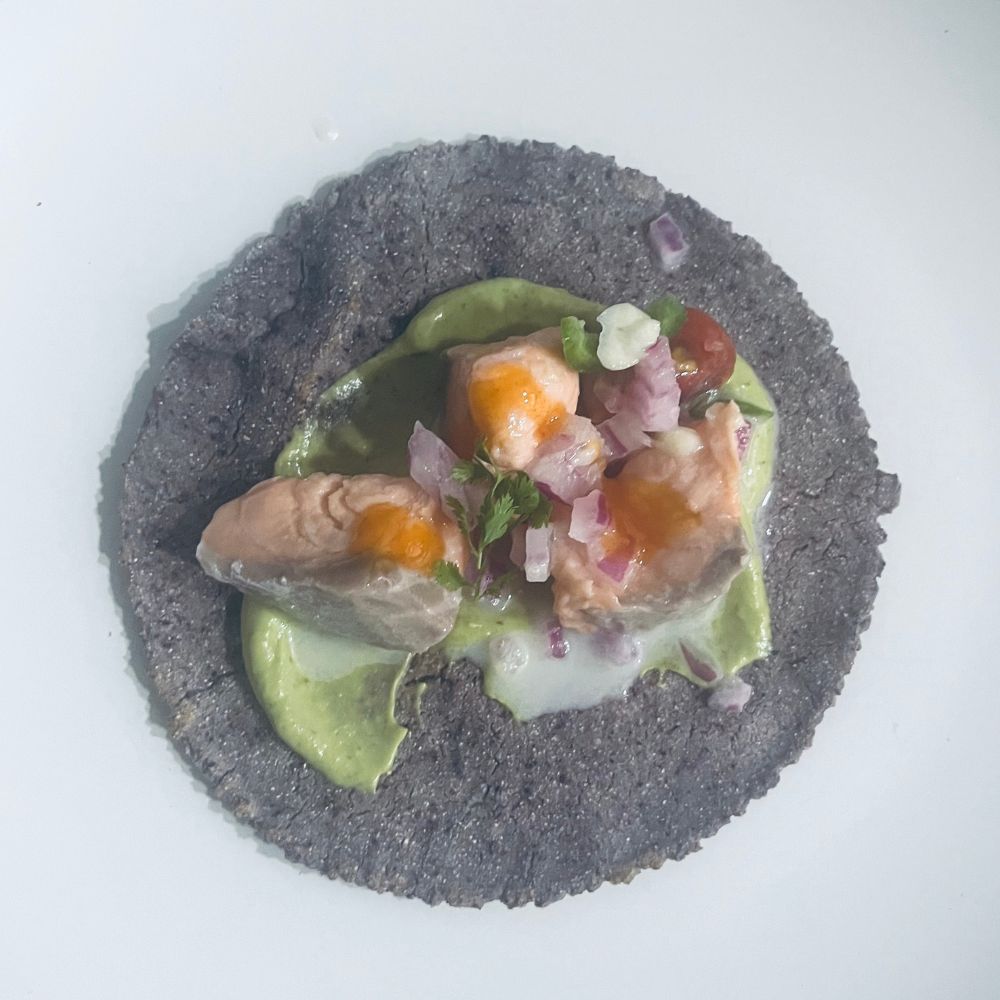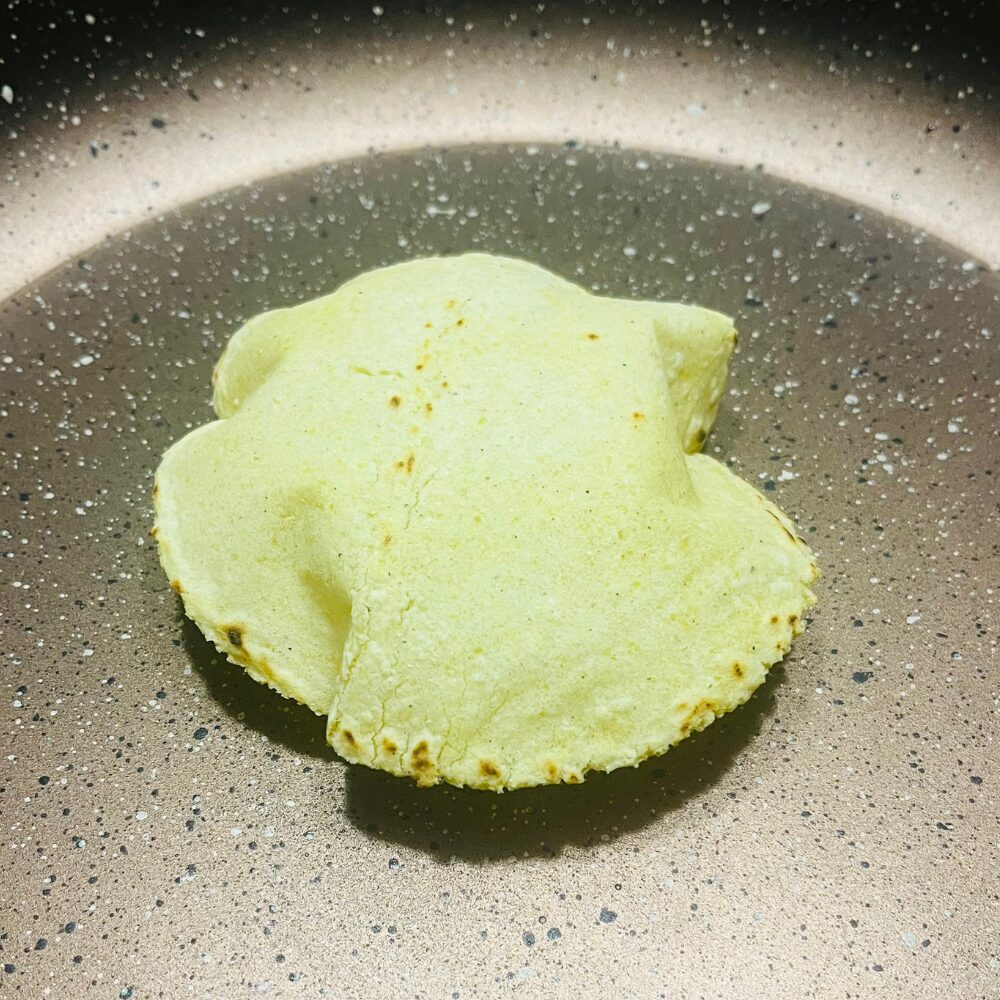If you’ve ever stood in front of a tortilla press, masa in hand, and wondered why some tortillas are white, some golden, some beautifully indigo-blue or deep red – you’re not alone. Corn is at the very heart of Mexican cuisine, and each of the colours of corn brings not just a visual statement, but a distinct flavour, texture, and even nutritional edge.
Let’s unfold the colourful story behind the masa – and see which corn makes the ultimate tortilla. As a self-confessed taco addict, I love making my own tortillas and have tried cooking from all these colours of masa carina, but let’s dig a bit deeper.
First, What Is Masa Harina?
Masa harina is the flour made from nixtamalized corn – corn that’s cooked and then soaked in an alkaline solution (limewater).
This ancient Mesoamerican technique unlocks nutrients, improves digestibility, and gives masa its iconic aroma and flexibility. See more about masa and the tortilla-making process in my previous post here.
All the colours of corn – white, yellow, blue, red – can be nixtamalized and turned into masa harina.
But how do they differ?
🌽 1. White Corn: The Classic All-Rounder
Flavour: Mild, slightly sweet, clean corn taste.
Texture: Soft, pliable, ideal for everyday tortillas and tamales.
Colour: Pale ivory that turns light cream when cooked.
Nutritional profile (per 100g masa harina):
- Calories: 365 kcal
- Protein: 8.5 g
- Fibre: 7 g
- Fat: 4.3 g
- Carbs: 74 g
- Calcium: 100 mg
- Iron: 2.5 mg
Notes:
White corn is the most neutral and traditional base for tortillas across Mexico. Its subtle flavour makes it versatile – perfect for tacos, enchiladas, or as a base for sopes.
🌾 2. Yellow Corn: The Sweet & Nutty Cousin
Flavor: Slightly sweeter and nuttier than white.
Texture: Slightly firmer; holds shape better, ideal for toasting or frying.
Colour: Warm golden tone that deepens with heat.
Nutritional profile (per 100g masa harina):
- Calories: 370 kcal
- Protein: 9 g
- Fibre: 7.5 g
- Fat: 4.5 g
- Carbs: 73 g
- Beta-carotene: High (precursor to Vitamin A)
Notes:
Yellow corn masa tortillas are popular in the north of Mexico and the U.S. Southwest. The beta-carotene gives a subtle health boost for your eyes and skin – plus, their toasted aroma makes them excellent companions to smoky fillings or grilled meats.
💙 3. Blue Corn: The Antioxidant Powerhouse
Flavour: Earthy, nutty, slightly sweet, and more complex.
Texture: Slightly denser and more crumbly; benefits from higher moisture.
Colour: Deep indigo-blue or violet that turns grayish-blue when cooked.
Nutritional profile (per 100g masa harina):
- Calories: 360 kcal
- Protein: 9.5 g
- Fibre: 8 g
- Fat: 4.2 g
- Carbs: 70 g
- Anthocyanins: High (powerful antioxidants)
- Lower glycemic index than white/yellow corn
Notes:
Blue corn tortillas aren’t just pretty – they’re functional food. Those anthocyanins (same pigments as blueberries) help reduce inflammation and support cardiovascular health. The flavour pairs beautifully with earthy fillings like mushrooms al pastor or black beans.
❤️ 4. Red Corn: The Rare & Rustic One
Flavour: Deeply corny, robust, and slightly spicy.
Texture: Dense but smooth when nixtamalized properly.
Colour: Red-brown to burgundy tortillas, depending on variety.
Nutritional profile (per 100g masa harina):
- Calories: 365 kcal
- Protein: 9 g
- Fibre: 7.5 g
- Fat: 4 g
- Carbs: 72 g
- Anthocyanins & carotenoids: Moderate to high
- Iron: Slightly higher than other corn types
Notes:
Red corn masa is less common commercially but beloved in artisanal tortillerías. Its bold hue and rustic flavour make it a showstopper for tacos featuring grilled vegetables, mole, or seared fish.
⚖️ Comparing the Four: Flavour Meets Nutrition
| Type of Corn | Flavor | Color | Texture | Notable Nutrients | Best For |
| White | Mild, classic | Cream | Soft, pliable | Balanced, digestible | Everyday tortillas, tacos |
| Yellow | Sweet, nutty | Golden | Slightly firm | Beta-carotene | Frying, tostadas, nachos |
| Blue | Earthy, rich | Indigo/Gray | Dense | Anthocyanins, fiber | Health-conscious tacos |
| Red | Deep, rustic | Burgundy | Dense, smooth | Iron, antioxidants | Grilled veggies, mole |
🧠 So… Which One Is “Better”?
That depends on your priorities:
- If you’re after tradition and versatility → go White Corn.
- For colour and antioxidants → pick Blue Corn.
- Want a nutty, golden, slightly sweet tortilla → choose Yellow Corn.
- Craving something unique and artisanal → Red Corn wins on character.
From a nutritional standpoint, blue corn comes out ahead – higher in protein, fibre, and antioxidants, and lower on the glycemic index.
But from a culinary standpoint, each colour has a role: think white for daily cooking, yellow for crunch, red for drama, and blue for depth.
My Final Thoughts on the Colours of Corn
Tortillas aren’t just “carbs.” They’re the cultural DNA of Mexican cuisine: a product of land, climate, and colour.
Choosing your corn is like choosing your mood: white for comfort, yellow for sunshine, blue for wisdom, red for passion.
So next time you make masa, experiment! Mix colours, feel the textures, smell that earthy aroma of nixtamalized corn, and remember – it’s all part of a tradition that’s as nourishing for the body as it is for the soul.


A small bonus: Brands of Masa Harina I use
The most well-known brand is Maseca, and I’ve already achieved a nearly perfect puffiness of corn tortillas made with Maseca white corn masa harina. Some would argue that this is the most industrial brand, and it’s better to use masa harina made from heirloom corn varieties. So, I’ve tried several brands that do exactly that, and so far, my favourite is Masienda. They are very serious about corn varieties, and I must add that cooking with their masa harina is a pure joy.
By Dito
Restaurateur. Wine Expert & Educator (dipWSET). Flexitarian Chef. Senior Marketer. Entrepreneur.
Learn more about Dito


